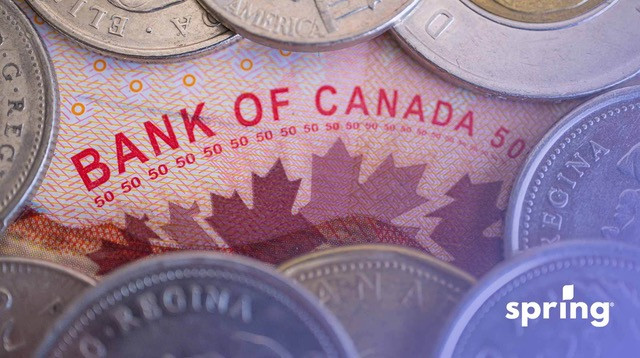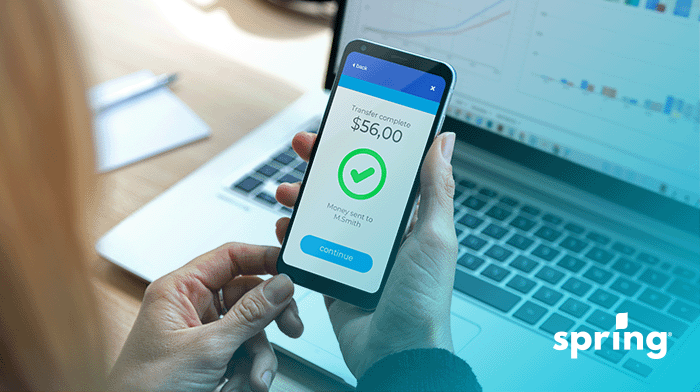IBAN, also known as an International Bank Account Number, is a type of bank account number used by 75 different countries. This number is needed to send and receive money and is unique to your bank account. Each number and letter is a unique identifier. It’s not just used to send money to friends and family, though; these are also commonly used to pay international suppliers.
IBAN Vs Account Number
While an IBAN is one of the international bank account formats, it does differ from your traditional account number. This is because IBANs are considered to be international numbers and can provide much more detail than your traditional bank account number. This information is then used to process international payments through other financial institutions.
IBAN
Your IBAN is made up of many different numbers to create this unique number. Here is a breakdown of what it includes:
- Two-Letter Country Code
- Check Digit Code
- Bank Identifier Code
- Branch Sort Code
- Account Number
When you put all of these together, you get an IBAN. However, if you leave out the first two sections, you still get a valid number that’s known as the BBAN or a Basic Bank Account Number which is also used to identify individual bank accounts.
It’s also important to note that the number of characters used in each section can vary. That said, the maximum amount of characters an IBAN is allowed to hold is 34. This type of number is often used in European countries by European banks, especially those that are included in the European Union.
Account Number
In Canada, account numbers are used to distinguish which bank account is yours. However, these don’t include what bank and which branch the account is held in. So, unless you have this information, then having just the account number itself doesn’t do much.
Account numbers vary in length and range anywhere from 7 to 12 numbers. No matter which country you’re in, though, just having this number isn’t enough. You also need to have other identifiers so they know which bank and which branch of that bank they are referring to. Some financial institutions may also require other identifiers to ensure that the funds end up in the correct account.
Example of An IBAN
As we’ve already mentioned, IBANs are a much more detailed version of a bank account number that’s split into different sections. This is what one could look like.
- Country Code – AB
- Check Digit Code – 12
- Bank Identifier Code – CDEF
- Branch Code (Bank Code) – 345678
- Account Number – 91011213
This would make the IBAN: AB12CDEF345678910111213.
Where To Find An IBAN Number
Since an IBAN is considered to be private information, not just anyone can access it. If you need this information to send money overseas, then you will have to request it directly from them; however, if you’re looking for your own IBAN number, that depends on where you live. Usually, it’s on your bank statement, or you can request it from your bank.
In Canada, if you’re looking for the same information, you need your branch number, transit number, and routing number. This will give you what you need to have funds deposited into your bank account. You can find this information on your online banking or a void cheque, or you can also request it from the bank in the form of a Preauthorized Debit form, which is often also referred to as a PAD form.
IBAN Numbers at Different Banks
While we’ve already mentioned that International Bank Account Numbers aren’t used in Canada, these banks still need numbers that allow funds to be transferred domestically and internationally. When it comes to domestic transfers, routing numbers and specific bank account numbers are used. For international transfers, Canadian banks use the SWIFT system instead of IBANs. SWIFT stands for Society for Worldwide Interbank Financial Telecommunications.
RBC
RBC has a different way of structuring their routing numbers and SWIFT codes for domestic and international money transfers. What you need to know depends on whether you choose to send to an RBC bank or receive funds to an RBC bank.
If you bank with RBC and are looking to receive an international transfer, the bank that is sending these funds to you is going to need the following information:
- Account number
- Home address
- Institution number
- SWIFT BIC Codes
- Branch information and transit number
It’s important to remember that the SWIFT code and BIC will change based on the currency and the bank that it’s sent from. When it comes to RBC, their SWIFT code is ROYCCAT2 and the BIC will be different for every currency. This includes receiving cross-border payments from the US.
CIBC
CIBC is another large bank in Canada. With this bank, you can also receive international money transfers as long as you provide the sending bank with the correct information. First, you want to provide the bank name along with the complete address of your branch. Then, you’re going to provide your bank’s SWIFT Code and all other necessary information related to your account. This includes:
- Canadian clearing code
- Institution number
- Transit number
- Account number
- Full name
- Full address
With CIBC, your SWIFT Code is going to be CIBCCATT. This differs a little when it comes to US transfers. With US transfers, also referred to as cross-border payments, CIBC requests you use the Wells Fargo Bank N.A as an intermediary bank. The information that goes with this is as follows:
- Bank Address – New York, NY, US
- SWIFT Code: PNBPUS3NNYC
- Chips ID 0509
- Fedwire or ABA: 026005092
Scotiabank
Receiving an international transfer to Scotiabank is similar to that of the other large banks in Canada. You’re going to need your institution number, which is the 3 digit number that is individual to the bank you’re using. For Scotiabank, this number is 003. You’re also going to need your transit number which is a 5 digit number that is specific to your home bank branch. If you combine these two numbers, then you have your routing number.
Another important thing you’re going to need to know is your Scotiabank SWIFT Code. This is NOSCCATT. One difference, though, is that transfers from the US are also going to need an ABA number. For Scotiabank, this number is 026002532. The last thing you need is your exact account number which is unique to your individual account.
BMO
BMO, also known as the Bank of Montreal, is another large bank in Canada that allows for international bank transfers. In fact, most banks do. However, they also offer global online transfers which is a unique feature not all banks offer just yet.
When it comes to receiving an international transfer with BMO, you’re going to need the standard information. This includes your full name and full address. You’re also going to need the 5-digit transit number of your home branch and your institution number, which is 010 for BMO. The SWIFT Code for BMO is BOFMCAM2. For transfers coming from the US you’re also going to need an ABA number, which is 026005092.
TD
Just like with the rest of the banks in Canada, SWIFT Codes are used for international bank transfers but don’t always apply to US transfers. If they do apply to US banks, often the information is slightly different and you may need a different SWIFT Code and an ABA number.
When it comes to receiving an international transfer, there’s specific information that you need to provide to the bank that’s looking to send you the funds. This information includes:
- Account holder’s full name
- Account holder’s full address
- Account number
- Branch transit number
- Full bank address
- Institution number: 004
- International SWIFT Code: TDOMCATTOR
When it comes to US transfers, TD requests that you process these with their US Intermediary Bank. This is the Bank of America, New York. The SWIFT Code is BOFAUS3NXXX. The Fedwire ABA number is 026009593.
Getting An IBAN Number in Canada
Only international banks offer IBAN numbers. Unless you have an open bank account with an international bank that offers these then IBAN numbers aren’t required. The only time you may need an IBAN number is when sending money on and you need the recipient’s bank account details.
Swift Code in Canada
In Canada, every bank has its own individual SWIFT Code. We’ve gone over the SWIFT Codes of the top 5 banks in Canada. Let’s take a look at some of the others.
| Canadian Bank | SWIFT Code |
| Canadian Western Bank | CWBKCA61 |
| Desjardins Group | CCDQCAMM |
| HSBC | HKBCCATT |
| National Bank of Canada | BNDCCAMM |
| ATB Financial | ATBRCA6EXXX |
| Canada Deposit Life Insurance Corp | CDICCAW2XXX |
| Central 1 Credit Union | CUCXCATT |
| CITIBANK Canada | CITICATT |
| Exchange Bank of Canada | EXBCCATT |
Why There Aren’t IBANs in Canada
The only reason that IBANs aren’t used in Canada yet is that Canada hasn’t adopted this number system for international payments. The IBAN is currently only used by those in the Single Euro Payments Area (SEPA) and a few other select countries. Instead, Canada uses routing numbers and SWIFT Codes. Essentially, these are similar versions to the IBAN and provide similar information, allowing for international money transfers.
Difference Between IBAN and SWIFT Codes
While IBANs and SWIFT Codes are both used to send money internationally, they’re actually both very different. A SWIFT Code identifies a specific bank. IBANs are used to direct the funds to a specific bank account.
In Canada, SWIFT Codes aren’t singular when used to send funds to a new account. Other information is also needed with the SWIFT Code in order to ensure that the funds are given to the correct recipient.
Bank Account Numbers In Canada
As we mentioned, along with your SWIFT Code in Canada, you need other bank account information. You’re going to need your routing number, which consists of your institution number and your transit number. You’re also going to need your 7-12 digit account number as well. An IBAN code will include this information, which is separate information in Canada.
Domestic Transfers vs. International Transfers
The main difference between domestic and international transfers is that they’re completed faster. Domestic money transfers are completed on the same day, whereas international transfers can take a few days to process. In Canada, though, there are even more differences.
In Canada, there are a variety of ways that you can send domestic transfers, and you don’t even need account numbers. You can send money in minutes just by using a secret question and an email address. This is done using Interac e-transfer. There are other money transfer services available as well, but Interac e-transfer is the most commonly used in the country.
When it comes to international transfers in Canada, you do need account numbers. You will also need to do international wire transfers. Some banks will offer this service online, which you can do yourself. Those that don’t though do require you to use a money transfer service to send the funds. International transactions also charge foreign exchange rates since there is a change in currency.
Final Thoughts
IBANs, also known as International Bank Account Numbers, are used in Europe and other countries to facilitate international money transfers. Canada, however, does not use the IBAN system. In Canada, routing numbers, account numbers, and SWIFT codes are used to facilitate international bank transfers using the SWIFT network, also referred to as the SWIFT code system.
SWIFT Codes in Canada indicate the bank or financial institution that the funds are going to be sent. The routing numbers and account numbers indicate which exact bank and which exact account. Lumping all of these numbers together allows for the funds to be deposited into the correct account as soon as possible.









